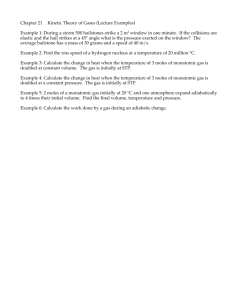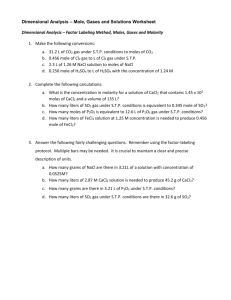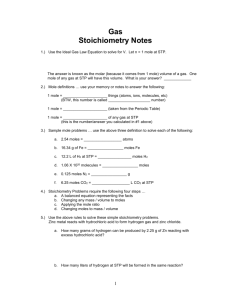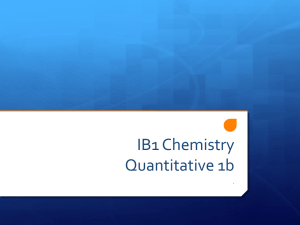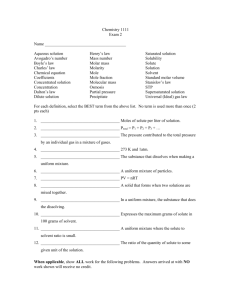Chem 11 finals review balancing and moles
advertisement
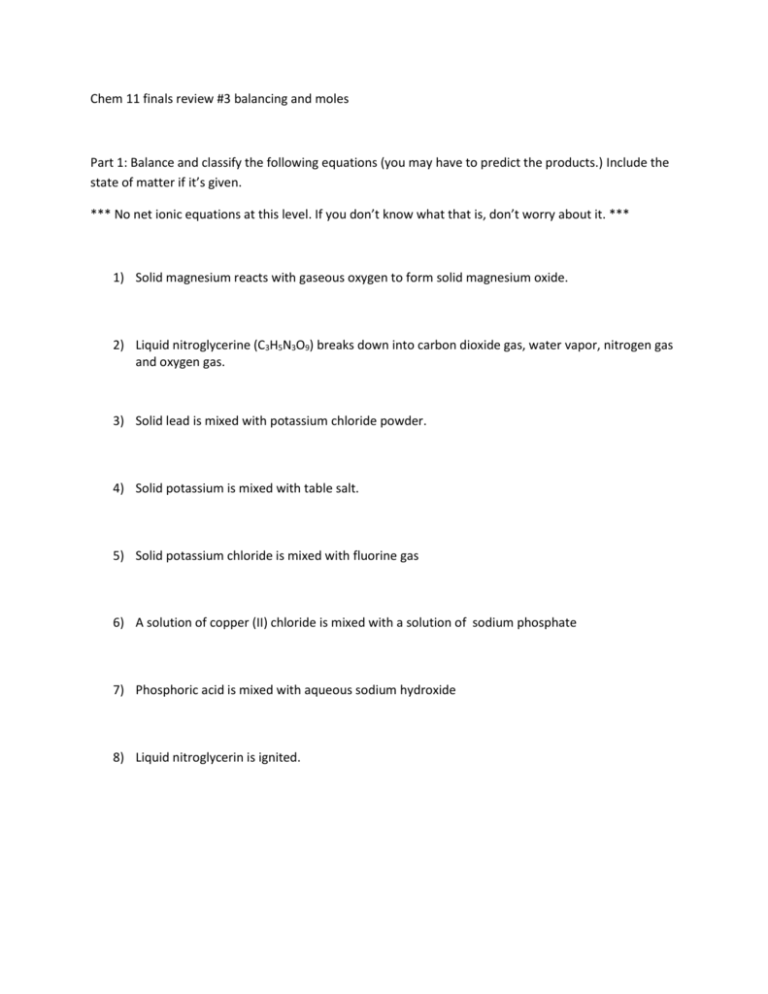
Chem 11 finals review #3 balancing and moles Part 1: Balance and classify the following equations (you may have to predict the products.) Include the state of matter if it’s given. *** No net ionic equations at this level. If you don’t know what that is, don’t worry about it. *** 1) Solid magnesium reacts with gaseous oxygen to form solid magnesium oxide. 2) Liquid nitroglycerine (C3H5N3O9) breaks down into carbon dioxide gas, water vapor, nitrogen gas and oxygen gas. 3) Solid lead is mixed with potassium chloride powder. 4) Solid potassium is mixed with table salt. 5) Solid potassium chloride is mixed with fluorine gas 6) A solution of copper (II) chloride is mixed with a solution of sodium phosphate 7) Phosphoric acid is mixed with aqueous sodium hydroxide 8) Liquid nitroglycerin is ignited. Part 2: Percent composition, empirical and molecular formula 1) What is the percent composition of each element in Nitroglycerine? 2) An imaginary compound consists of 15.96% C, 2.33% H, 21.28% O and 26.367% Br. What is its empirical formula? *** This question has been rigged to get certain numbers, do not worry about the %’s not adding up to 100%. It’s really difficult to make these questions with our periodic table having so few decimals. Just do the question!*** 𝑔 3) If the compound from #2 has a molecular mass of 397.8 𝑚𝑜𝑙, what is its molecular formula? Part 2: Basic mole calculations 1) What is the mass of 12.2 moles of naturally occurring Bromine? 2) How many moles of iron are there in a 1.24 g pure iron nail? 3) How many molecules of Iodine are there in an 8.1 mole sample? 4) How many moles of copper are there in a 3.10 g pure copper penny? 5) How many moles of oxygen gas are there in a 61.2 L sample at STP? 6) How many liters of volume does a 12.1 mole sample of gas take up at STP? 7) What is the molarity of the solution if 2.7 moles of solute is dissolved in 1.3 L of solvent? 8) How many moles of solute must you dissolve in 0.76 L of solvent to get a 1.7 M solution? 9) How many liters of solvent must you dissolve 1.88 moles of solute in to get a 1.41 𝑚𝑜𝑙 𝐿 solution? Part 3: Multistep mole calculations: 1) How many liters of volume does 8.21 g of nitrogen gas take up at STP? 2) What is the mass of 1.74 x 1012 molecules of Rhenium (IV) oxide? 3) 11.0 L of Hydrogen Chloride gas is at STP is bubbled through 500.0 mL of water. Assuming all of the Hydrogen Chloride is absorbed, what is the molarity of Hydrochloric acid that is made? 𝑔 4) 350.0 mL of water (density = 1.00 𝑚𝐿) is decomposed into its elements: a. How many grams of oxygen gas are created? b. How many L of volume would the Hydrogen gas take up at STP?

